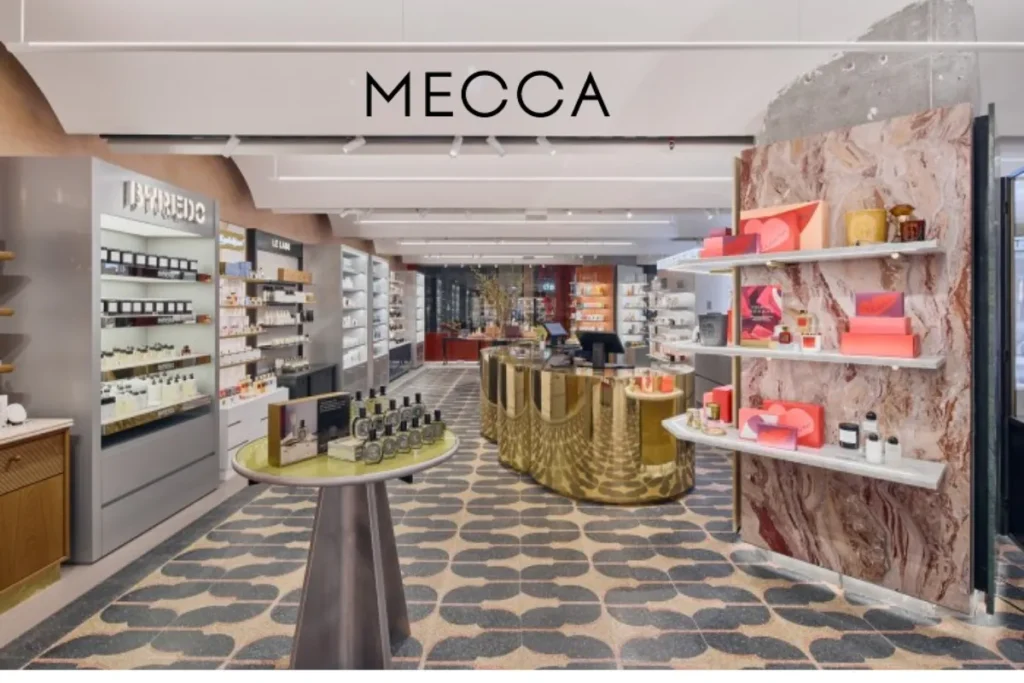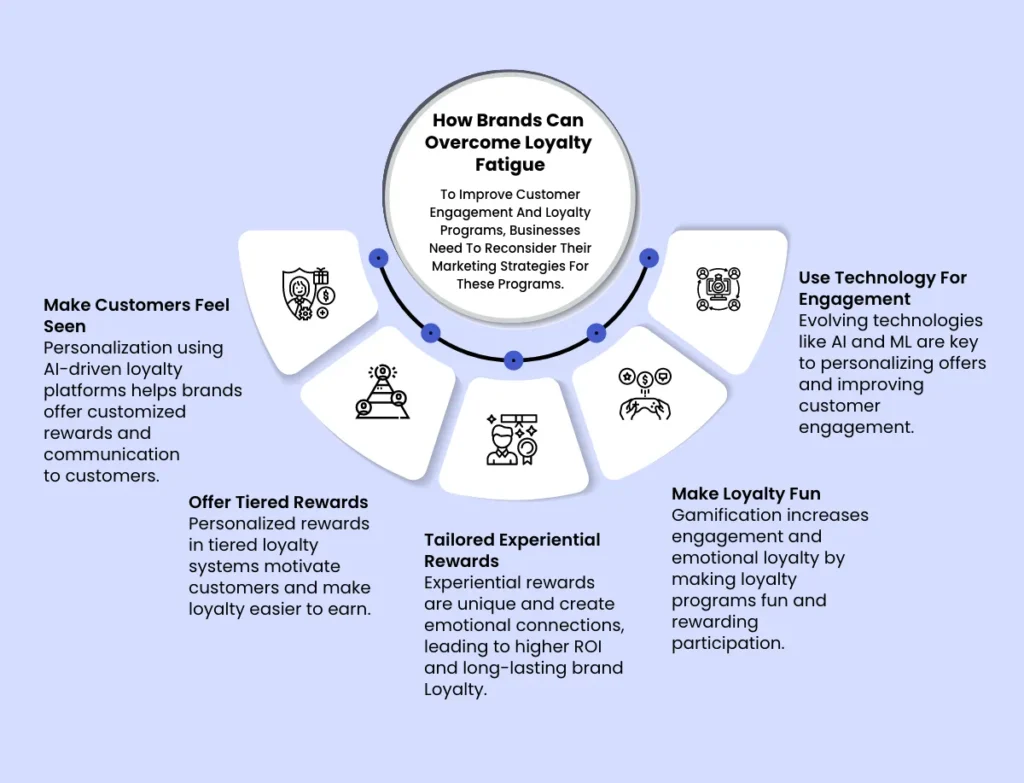In the past few years, businesses have seen a troubling tendency known as ‘loyalty fatigue.’
With so many programs offering similar, uninspiring rewards, customers quickly lose interest.
Today’s shoppers, especially the younger generation, expect personalized, engaging, and purpose-driven loyalty experiences.
Customers today don’t just want coupon cards or discounts, instead, they choose an exclusive entry to an event, a trip to their favorite place or socially impactful campaign to connect with.
Brands integrating gamification into their loyalty programs and engagement strategies have observed a 47% increase in engagement, a 22% boost in loyalty, and a 15% rise in brand awareness.
To retain and attract new customers, brands must modernize their approach.
So, how can brands revitalize their loyalty programs and bring customers back into the fold?
This blog discusses loyalty fatigue, how it impacts businesses, and strategies to overcome it.
What is Loyalty Fatigue?
Loyalty fatigue usually happens when customers become overwhelmed or disinterested in a brand’s loyalty program due to excessive complexity, lack of meaningful rewards, repetitive loyalty program offers, or overall saturation of loyalty initiatives.
Key contributors to loyalty fatigue include:
Complicated reward structures
Programs that require too much effort to understand or redeem benefits discourage participation. For example, many loyalty programs use tiered point systems that involve varied earning rates and redemption restrictions. These eventually lead to customers struggling to track their progress and leaving the programs in the middle.
Generic rewards
Consumers seek personalized experiences, and generic discounts may fail to excite them. Brands with very few or no rewards in the first or basic tier also face issues of lower engagement. Delta airlines reduced the benefits for the first tier and faced backlash on the new reward system. Ultimately, they had to introduce new benefits in the basic tier to engage the flyers.
Delayed gratification
Customers may lose interest if it takes too long to accumulate points and redeem rewards. Subway’s loyalty program faced backlash when customers realized that earning a single free sandwich would take dozens of purchases. Later, they launched a more simplified and revamped loyalty program, Subway MVP Rewards, which positively impacted the game.
Too many competing programs
With every brand offering a loyalty program, customers often disengage due to redundancy.
The time to send the notification to engage customers is crucial. Not every customer checks daily for rewards or redeems points. The better way to hit the right time will be part of their purchase cycle and remind them about points and rewards accordingly. This time should be customized for each customer based on their past activity instead of generic reminders sent to all customers on the same day of the week.
For example, supermarkets usually have similar point-based loyalty programs that offer discounts. Customers often forget which programs they’re part of or opt for the most convenient option instead.

The Impact of Loyalty Fatigue on Businesses
Loyalty fatigue can have a huge impact on brand’s positioning, such as:
- Reduced customer engagement: Customers who lose interest in a loyalty program are less likely to engage with the brand.
- Lower repeat purchases: If customers find rewards unappealing, they may not be motivated to return.
- Weakened brand differentiation: A poorly prepared program fails to make a brand stand out in a competitive market.
- Revenue loss: Customers not interested in a reward program lead to negative results, like sales reduction and decreased profitability.
Examples of Loyalty Fatigue in the Footwear & Beauty Industries
Footwear Industry:
Nike has encountered challenges with its loyalty program. Despite offering discounts and early access to new releases, customers found the rewards uninspiring and struggled to accumulate points due to restrictive earning structures. This led to a decline in loyalty program participation.

Beauty & Cosmetics Industry:
Mecca, a leading beauty retailer in Australia, faced challenges in maintaining customer engagement amid increasing competition. To manage the loyalty fatigue, Mecca invested in creating a flagship store in Melbourne along with luxury services and unique in-store experiences. This initiative aimed to redefine beauty experiences through exceptional customer service and engagement, supported by robust loyalty programs and educational initiatives. By focusing on personalized and immersive experiences, Mecca sought to strengthen customer loyalty and differentiate itself in the market.

How Brands Can Overcome Loyalty Fatigue
If customers are tuning out your loyalty programs, it’s time to rethink how loyalty program marketing is done. Brands can revitalize their loyalty programs with the following strategies:
1. Make Customers Feel Seen by Offering Personalization
More than 80% of customers engage with brands that offer personalized experiences. They don’t want the one-size-fits-all approach but to be appreciated for their loyalty with offers that reflect their preference.
With the help of an AI-driven loyalty platform, brands can tap into customer data to offer hyper-personalized rewards and communication. Platforms like Zinrelo enable this level of personalization, forming a sense of connection and encouraging repeat engagement, from special offers based on past purchases to timely rewards that feel handpicked.
Example: Starbucks use AI analytics to customize offers, such as suggesting a new beverage based on past orders or sending double-point promotions on a customer’s quiet days, which boosts engagement and repeat visits
2. Offer Tiered Rewards
A tiered system gives customers something to aim for: early access to new products or exclusive experiences. Rewards are the most important motivation behind moving into an upgraded tier. If these rewards are generic and the same for everyone, their motivation is diminished, while personalized rewards ensure maximum impact.
The more a customer interacts, the more they feel appreciated. And when even casual shoppers see value in moving up, loyalty gets easier to earn for a brand
Even small, thoughtful perks can make a big difference in keeping customers engaged. Surprise gifts, personalized offers, or exclusive experiences so customers feel valued.
Example: Sephora’s Beauty Insider program has made the most out of this approach. While top-tier members enjoy VIP perks like exclusive events and free beauty classes, entry-level members get birthday gifts and access to a vibrant community.
3. Boost engagement with tailored Experiential Rewards
Experiential rewards program transforms loyalty from a simple transaction into an emotional connection. Instead of just giving points, brands now offer rewards like invite-only events, exclusive content, early product access, or unique experiences that money can’t easily buy. Over 65% of companies plan to add experiential rewards, citing the exponentially higher ROI of experience-based loyalty.
Choose a top customer loyalty software that supports experiential rewards to enhance customer engagement beyond traditional points-based systems. These rewards create emotional moments with your brand, which tend to stick far longer than a one-time deal or coupon.
Example: McDonald’s made its new rewards program more fun by letting members redeem points not only for free food but also for quirky, share-worthy experiences (one campaign even let loyal fans put their names on a McDonald’s billboard)
4. Make Loyalty Fun and Engaging with Gamification
Customers today are drawn to competition, accomplishment, and rewards – gamification makes this happen by turning loyalty into a fun challenge rather than a chore.
Tactics like points, badges, challenges, leaderboards, and progress tracking give customers immediate feedback and a sense of accomplishment.
With a platform like Zinrelo, brands can seamlessly integrate gamification elements into their loyalty programs. Zinrelo’s tools make it easy to create leaderboards that spark friendly competition or reward streaks that keep customers coming back. By focusing on engagement rather than just transactions, brands can build emotional loyalty and keep customers excited. Gamification doesn’t just reward purchases – it rewards participation, making loyalty programs more meaningful and enjoyable.
Example: Nike connects its loyalty program to fitness milestones in its Run Club app, with badges and unlocking store discounts when users hit personal running goals. This keeps customers engaged with the brand between shopping and reinforces positive behaviors effortlessly.
5. Utilize Technology for Engagement
Today, loyalty programs cannot stand out without technology. From artificial intelligence to real-time analytics, brands can respond to customer needs instantly. AI and ML can declutter massive amounts of purchase data, web clicks, and social media interactions to uncover patterns humans miss.
An enterprise-grade loyalty platform, like Zinrelo, now offers tools like real-time data visualization, ML-based segmentation, and omnichannel support, enabling brands to respond swiftly to customer behavior, deliver relevant offers, and create a seamless loyalty experience. Solutions such as Zinrelo bring AI into the mix, predicting which offer will resonate with a specific customer and delivering it at just the right moment.
Example: Starbucks’s AI engine, Deep Brew, analyzes each loyalty member’s behavior and helps the company give highly targeted offers, like suggesting an afternoon snack to someone who usually buys only morning coffee. Starbucks incentivized dormant customers to join the loyalty program and encouraged existing members to visit more often, which contributed to the surge in membership and increased spending per member.
How: A robust mobile app or digital wallet integration makes it effortless for customers to earn and use rewards. With actionable tech strategies and pinpointed gaps by Zinrelo, you can upgrade the current plan for better outcomes.
Ready to Future-Proof Your Loyalty Program?
Is your loyalty program suffering from fatigue? Partner with Zinrelo to create an engaging, high-performing rewards program that drives customer retention. Discover and take the first step toward maximizing customer loyalty today!
Conclusion
Loyalty fatigue is a growing challenge for brands, but with the right strategies, businesses can revamp their programs to maintain customer engagement. Brands prioritizing personalization and multi-dimensional engagement will win back loyalty and increase retention once they have the proper roadmap.
Zinrelo allows brands to achieve this by using deep data analytics, machine learning-powered segmentation, and strategic consultation to design loyalty programs that truly resonate with customers.
Whether it’s real-time data visualization, omnichannel support, or seamless technology integration, Zinrelo ensures that loyalty programs stay fresh, exciting, and relevant.
Recommended read: Why revamping your loyalty program is essential in 2025


